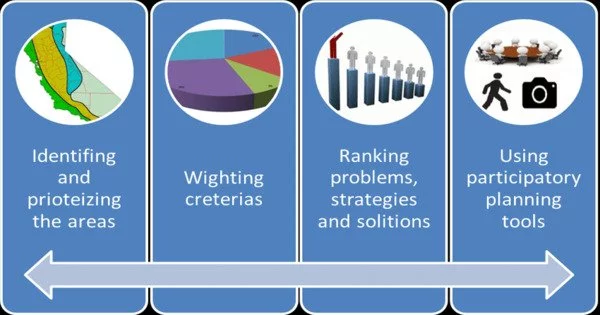Participatory planning is an urban planning paradigm that emphasizes the inclusion of the entire community in the planning process. It is a method of urban and regional planning in which the community and diverse stakeholders are actively involved in decision-making. It arose as a reaction to the centralized and rationalistic techniques that characterized early urban planning efforts. It is frequently regarded as a more inclusive and democratic method of developing and implementing community, city, or regional plans.
It has been an influential paradigm in both traditional urban planning and international community development. There is no single theoretical framework or collection of practical procedures that include participatory planning. It is a broad paradigm that encompasses a wide range of theories and techniques. During the planning process, it appears that technical competence is integrated with the desires and understanding of community members.
Here are some key aspects of participatory planning:
- Community Involvement: One of the central principles of participatory planning is involving the people who will be affected by the plan in the decision-making process. This includes residents, businesses, community organizations, and other local stakeholders.
- Democratic Decision-Making: Participatory planning aims to democratize the planning process by giving individuals and groups a say in the development of policies, projects, and initiatives. This can help ensure that plans reflect the diverse needs and interests of the community.
- Collaboration: The planning process often involves collaboration between local government officials, planners, and the community. This can take the form of public meetings, workshops, focus groups, or other methods of engagement.
- Transparency: Information about the planning process, including data, proposals, and decision-making criteria, should be made accessible to the public. This transparency helps build trust and allows for informed participation.
- Capacity Building: Participatory planning often includes efforts to build the capacity of community members to participate effectively in the process. This may involve education and training.
- Multiple Perspectives: Participatory planning can combine many viewpoints and ideas by including a diverse variety of stakeholders, potentially resulting to more innovative and balanced designs.
- Empowerment: Participatory planning seeks to empower communities by allowing them to shape their own destiny. This can lead to a stronger sense of ownership and accountability for the results.
Participatory planning can be applied in a variety of settings, ranging from local development and land-use planning to larger-scale regional or city planning. It can aid in the development of plans that are more sensitive to community needs and wants, promote social fairness, and build stronger, more resilient communities. However, it can be difficult to manage and may necessitate significant time and money to complete efficiently.
















